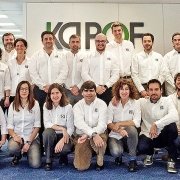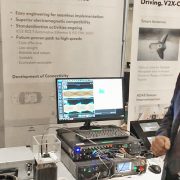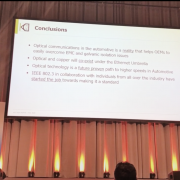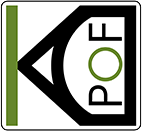KDPOF is delighted to present at the virtual Photonics Days Berlin Brandenburg 2020 from October 5 to 8, 2020. On Monday, October 5 at 10:40, César Esteban, Application and Support Manager of KDPOF, will give the presentation “Optical Automotive Ethernet” within the session “Innovative Optical Fibers”. Plastic optical fibers (POF) are the most reliable solution in vehicles since they can withstand harsh environments, vibrations, misalignments, dirtiness, humidity, wide temperature range, etc. Additionally, optical Ethernet generates very low noise and can operate in noisy environments, such as in RF electronic boards.
Full Standardization of Optical Gigabit
Recently, ISO (International Organization for Standardization) has added two new sections to the in-vehicle Ethernet series 21111. These newly approved parts are key components to assure reliable implementations of systems that realize in-vehicle Ethernet Optical 1 Gb/s as a physical layer. With the new ISO 21111 sections complementing the existing IEEE Std 802.3bvTM, optical Gigabit connectivity is now entirely standardized. Based on these standards, KDPOF’s optical technology allows a complete, compatible, and interoperating implementation for carmakers and Tier1s.
The KD1053 transceiver perfectly meets the requirements of carmakers by providing high connectivity with a flexible digital host interface, low latency, low jitter, and low linking time. The transceiver is optimized for low power and small footprint and transmits data at 1000/100 Mb/s on standard SI-POF, MC-POF, or PCS, according to 1000BASE-RH (IEEE 802.3bv).
Outlook on Optical Multi-Gigabit
With technological leaps such as electrical vehicles, automated driving, and V2X interconnection rushing through, automotive applications, utilization, and safety requirements are boosting the necessary network speed tremendously. Consequently, in-vehicle networks are on the brink of speeds from one to multiple gigabits per second. Optical Multi-Gigabit Ethernet in the car is on the verge of standardization and implementation. With the approval of the IEEE 802.3 working group, a team of individuals affiliated with more than 15 key carmakers and components suppliers, including KDPOF, has started the standardization of an IEEE 802.3 Automotive Optical Multi-Gigabit Standard with strong support from the industry. KDPOF has already displayed the world’s first demonstration of an automotive-grade optical transmission system with 50 gigabits per second single lane, leveraging datacom components.
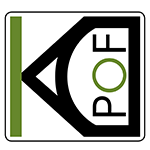

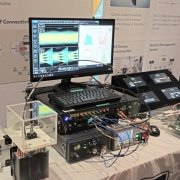
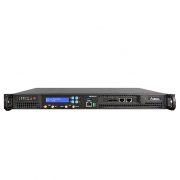 Aukua Systems
Aukua Systems
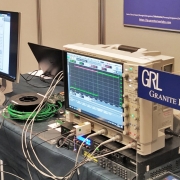 KDPOF
KDPOF

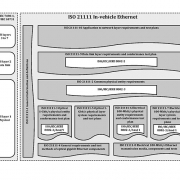 ISO
ISO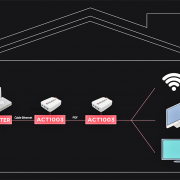 Actelser
Actelser